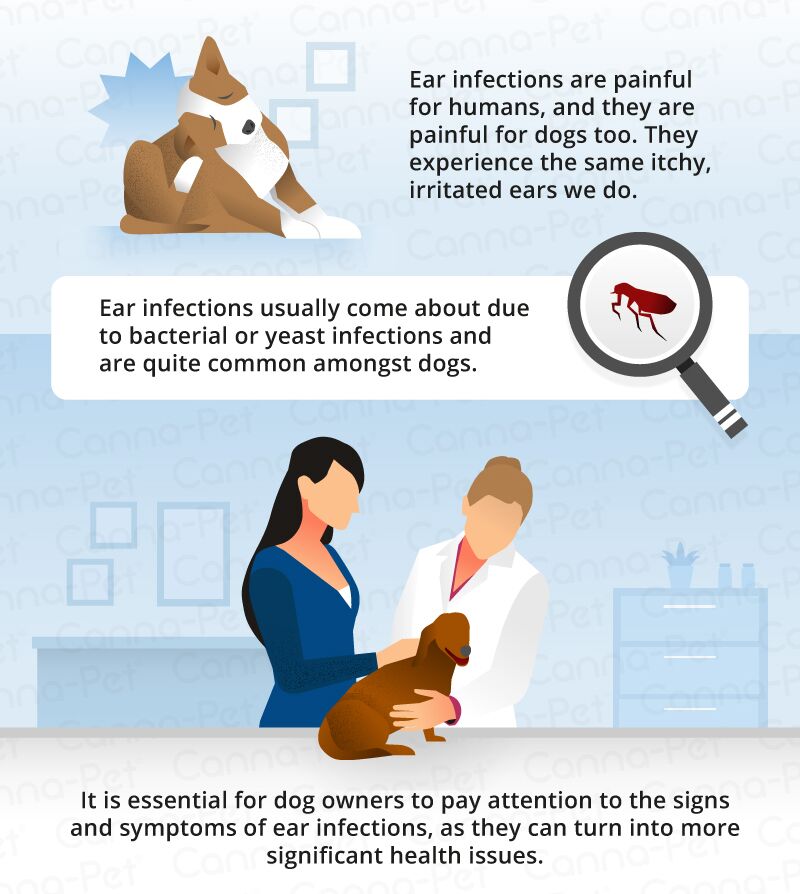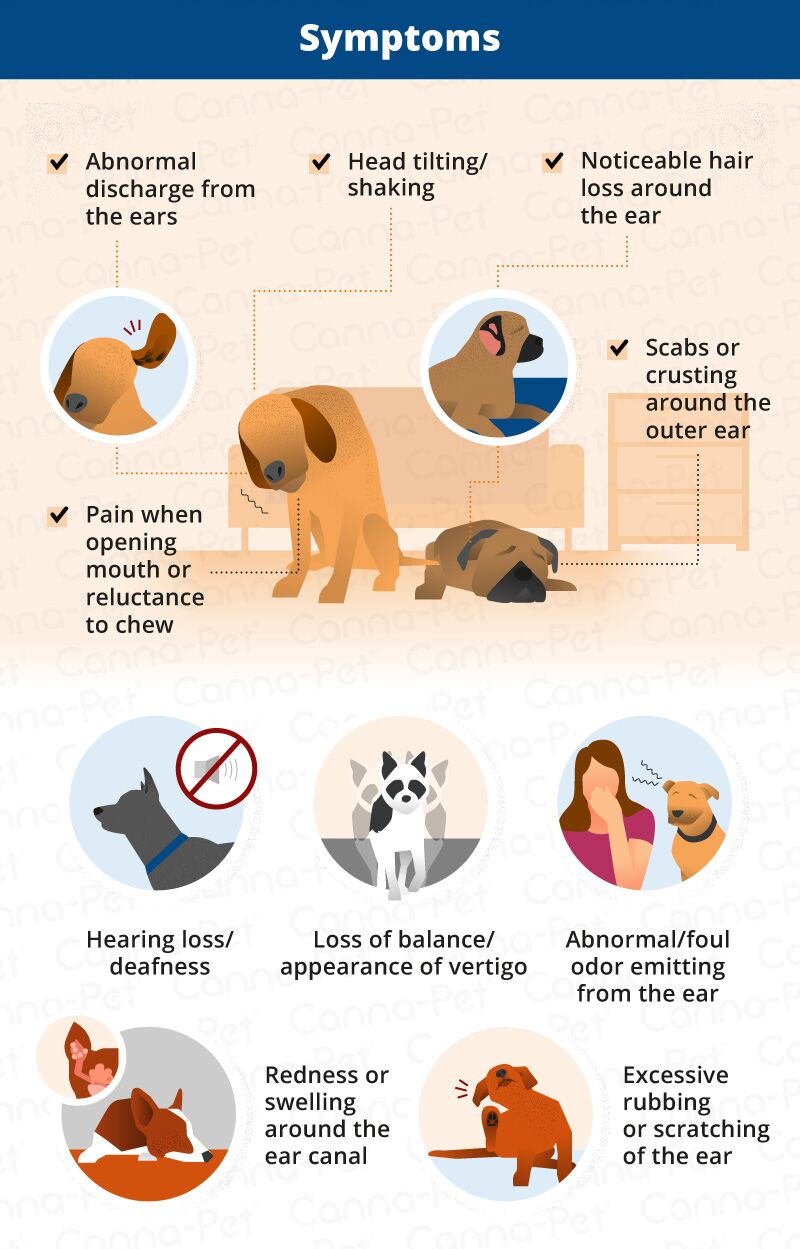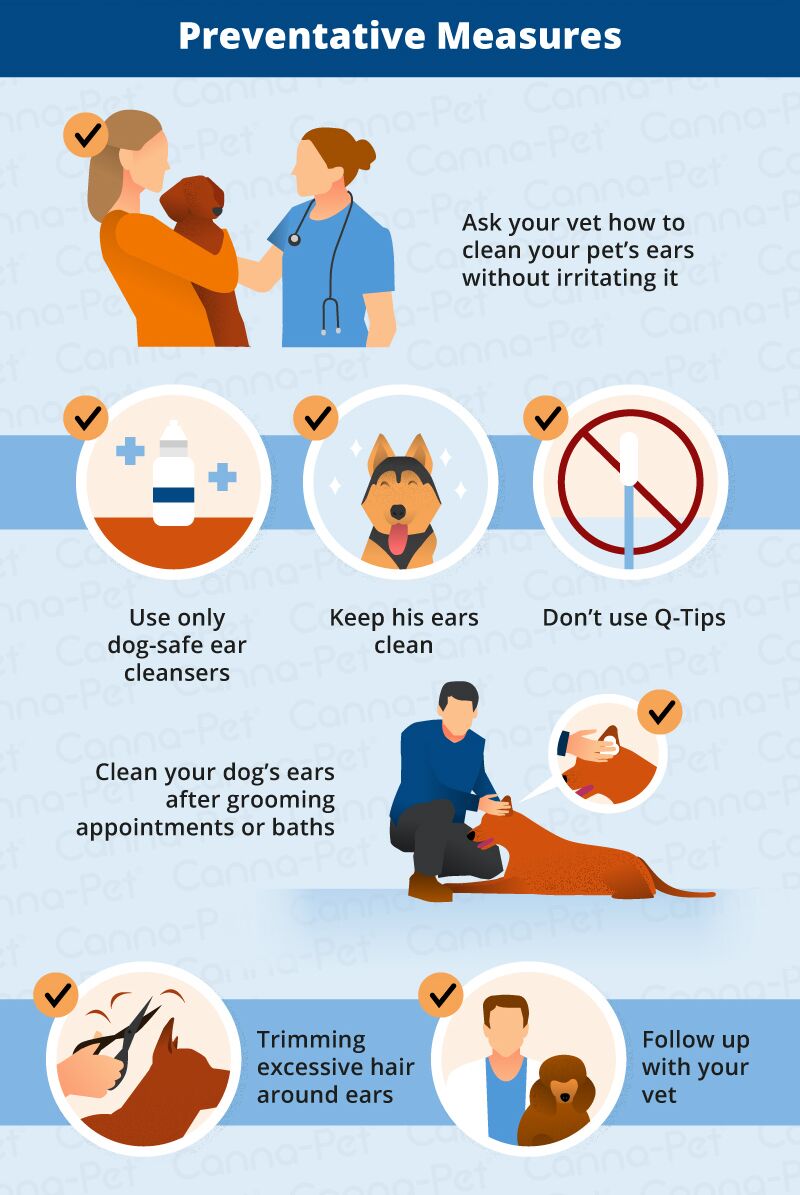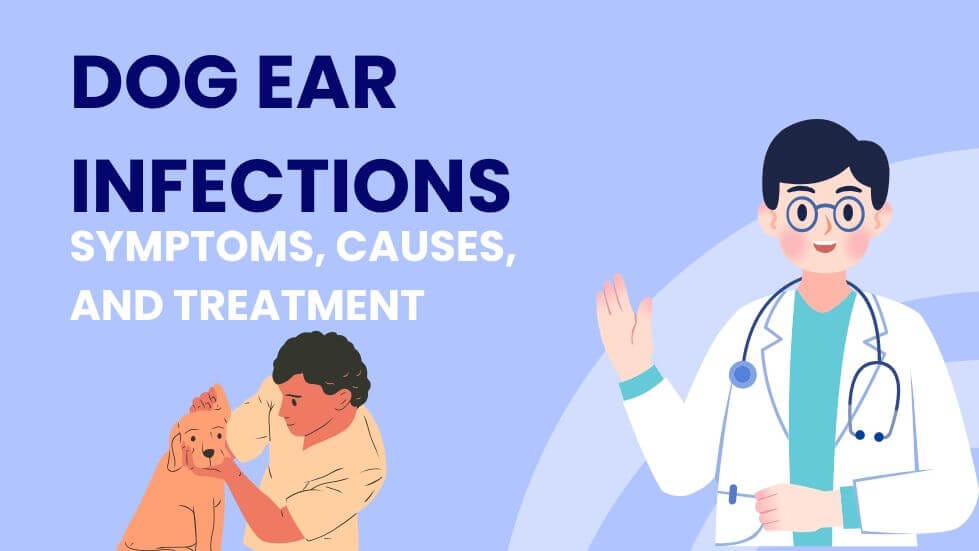Introduction
Dog ear infections are are quite common occurring in up to 20% of dogs and are broadly categorized as otitis externa, media or interna. These types of infections, collectively known as otitis, can be very painful and uncomfortable for the dog. Unchecked, they can result in significant complications, including hearing loss, balance issues or even facial paralysis. For pet parents, knowledge of the symptoms, causes, treatments and methods of prevention are very important so that their dogs can be stay healthy and happy.
This in-depth guide covers everything you need to know about dog ear infections, from early detection to practical prevention. So whether you’re a first-time dog owner or a pro at caring for your pet, we’ll provide all the information you’ll need to keep your dog’s ears healthy. Hyderabad’s trusted veterinary provider, PetYaari’s clinics in BN Reddy Nagar, Vanasthalipuram, and Kharmanghat offer expert care to address dog ear infections and related dog health issues. Led by Dr. Sajeed, our team uses advanced diagnostics to ensure your pet’s well-being.

Types of Ear Infections
Different types of dog ear infections are determined by the specific part of the ear that is infected. Each type has its own features and possible complications:
- Otitis Externa: The type most frequently seen, is deep within the ear canal. It’s an inflammation of the skin lining the external ear and often the simplest to treat.
- Otitis Media: This is the infection of the middle ear, the compartment behind the eardrum. It is usually due to untreated or continous otitis externa and may be more difficult to treat.
- Otitis Interna: The most serious form, affecting the inner ear. It may lead to neurological symptoms such as balance loss or facial nerve injury and should receive immediate veterinary care.
Understanding these distinctions helps in recognizing the severity of the infection and seeking appropriate care.
Symptoms
Dog ear infections have different signs and symptoms depending on the type and severity. Some dogs will exhibit subtle signs, and some dogs show severe distress. Here is a complete list of symptoms to look out for:
| Symptom | Description |
|---|---|
| Head Shaking | Frequent shaking or rubbing of the head, often along surfaces. |
| Scratching/Pawing | Persistent scratching or pawing at the affected ear(s). |
| Redness/Swelling | Inflamed, red, or swollen ear canal or ear flap. |
| Odor | A yeasty, corn chip-like, or foul smell from the ear. |
| Discharge | Yellow, brown, black, or bloody discharge, sometimes pussy. |
| Pain | Discomfort or sensitivity when the ear is touched. |
| Itchiness | Excessive itching, leading to scratching or rubbing. |
| Crusting/Scabs | Crusty or scabby skin in or around the ear. |
| Aural Hematoma | Swelling in the ear flap due to ruptured blood vessels from scratching. |
| Balance Issues | Head tilt, circling, or falling, especially in middle/inner ear infections. |
| Hearing Loss | Reduced responsiveness to sounds, particularly on the affected side. |
| Nausea/Vomiting | Seen in severe inner ear infections, often with disorientation. |
| Facial Nerve Damage | Drooling, drooping eyelids/lips, difficulty eating, or Horner’s syndrome (uneven pupils, protruding third eyelid). |
| Wax Buildup | Excessive wax or debris, sometimes the only sign in mild cases. |

Other signs are evidence of infection of the middle and/or inner ear (like nystagmus or head tilt). Once in a while you should have a look at your dogs ears, some dogs show no problems in this apart from the wax accumulation. Pet parents in LB Nagar and Dilsukhnagar often notice these symptoms during monsoons, when humidity exacerbates dog ear infections.
Causes
Other signs are evidence of infection of the middle and/or inner ear (like nystagmus or head tilt). Once in a while you should have a look at your GSD ears, some dogs show no problems in this apart from the wax
| Cause | Details |
|---|---|
| Bacteria/Yeast | Overgrowth of bacteria (e.g., Staphylococcus, Pseudomonas) or yeast (Malassezia), often due to a compromised ear environment. |
| Ear Mites | Parasites, more common in puppies but can affect adults exposed to infected animals. |
| Allergies | Skin or food allergies contribute to 43-80% of chronic ear infections, especially in dogs with allergic skin disease. |
| Foreign Bodies | Grass seeds, insects, or debris lodged in the ear canal, causing irritation. |
| Anatomical Factors | Dogs with long, floppy ears (e.g., Cocker Spaniels, Basset Hounds) or narrow ear canals are prone due to poor ventilation and moisture retention. |
| Moisture | Excess moisture from swimming or bathing creates an ideal environment for microbial growth. |
| Hormonal Imbalances | Conditions like hypothyroidism increase susceptibility. |
| Wax Buildup | Excessive wax traps moisture and debris, fostering infections. |
| Trauma | Injury to the ear canal or eardrum allows bacteria to penetrate deeper. |
| Growths | Polyps or tumors in the ear canal can obstruct airflow and cause infections. |
The natural L position of a dog’s ear canal (unlike the human’s) leave them susceptible to retention of fluids and infections. Hyderabad’s monsoon season heightens moisture-related dog ear infections. Regular vet checkups at PetYaari can catch these issues early.
Diagnosis
Proper diagnosis is the key to appropriate treatment. The doctors at PetYaari use various diagnoses for the type and cause of the ear infection:
- Physical Examination: Assessing the ear for inflammation, discharge, odor, or pain.
- Otoscopic Examination: Using an otoscope to inspect the ear canal and eardrum. This ensures the eardrum is intact, as certain medications can cause hearing loss if the eardrum is ruptured.
- Cytology: Examining a sample of ear discharge under a microscope to identify bacteria, yeast, or mites.
- Culture and Sensitivity Testing: Growing bacteria to determine the most effective antibiotic, especially in resistant cases.
- Imaging: X-rays or CT scans for suspected middle or inner ear involvement.
These diagnostic tools help tailor treatment to the specific infection and underlying causes. Suspect a dog ear infection? Book a vet checkup or dog blood test near me at PetYaari!
Treatment
Treatment depends on the type and seriousness of the infection and the cause that underlies it. Veterinary consult is necessary for most infections – home care does not work well. Common treatments include:
| Treatment Type | Details |
|---|---|
| Topical Medications | Ear drops with antibiotics, antifungals, or steroids, applied 1-2 times daily for 7-10 days. |
| Oral Medications | Antibiotics (e.g., amoxicillin-clavulanate, enrofloxacin), antifungals (e.g., itraconazole), or anti-inflammatories for severe cases, often for 6-8 weeks in inner ear infections. |
| Ear Cleaning | Using vet-recommended cleaners to remove debris. Avoid cotton swabs inside the canal to prevent eardrum damage. |
| Surgery | Total ear canal ablation (TECA) or ventral bulla osteotomy (VBO) for chronic cases with scarred or narrowed canals. |

For otitis interna, hospitalization might be indicated for IV fluids if they are nauseous or ataxic. It is of utmost importance to complete the entire course to avoid resistant infections. Treating the cause, such as allergies or hypothyroidism, is as important as ensuring there is no reoccurrence. Get your dog relief today! Book a treatment at PetYaari’s Hyderabad clinics.
Prevention
Preventing ear infections involves proactive care and addressing risk factors. Key strategies include:
| Prevention Method | Details |
|---|---|
| Regular Ear Checks | Inspect ears weekly for signs of irritation or infection. |
| Proper Cleaning | Use vet-approved ear cleaners, avoiding cotton swabs inside the canal. |
| Drying Ears | Thoroughly dry ears after swimming or bathing to prevent moisture buildup. Dog ear powder can help. |
| Allergy Management | Work with a vet to control allergies, possibly through elimination diets. |
| Grooming | Pluck or trim hair in hairy ears, as advised by a vet, to improve ventilation. |
| Skin Condition Treatment | Manage skin issues, as ears are lined with skin and prone to related infections. |

Regular grooming, especially for dogs that swim, and using cleaners with appropriate pH and drying agents can significantly reduce infection risks.
How to Clean Your Dog’s Ears
Proper ear cleaning is a cornerstone of prevention. Follow these steps:
- Choose a Vet-Approved Cleaner: Avoid harsh chemicals like hydrogen peroxide.
- Calm Your Dog: Ensure your dog is relaxed, possibly with assistance.
- Apply Cleaner: Gently squeeze the cleaner into the ear canal while holding the ear flap.
- Massage the Ear Base: Massage to distribute the cleaner and loosen debris.
- Allow Shaking: Let your dog shake its head to expel debris.
- Wipe the Outer Ear: Use a cotton ball or gauze to clean the outer ear, avoiding the canal.
- Repeat if Needed: For very dirty ears, repeat the process.
Never insert cotton swabs into the ear canal, as they can cause damage or push debris deeper.
When to See a Vet
Think about Ear Infection If you suspect an ear infection prompt veterinary attention is important. Consult with your veterinarian if your dog has:
- Severe pain or sensitivity
- Head tilt or loss of balance
- Foul-smelling or pussy discharge
- Aural hematoma (swollen ear flap)
- Neurological signs (e.g., drooling, facial drooping, vomiting)
Early intervention can prevent potential complications, such as chronic infections or permanent damage. If repeat infections (greater than 2-3 in a lifetime) – speak to a vet about possible underlying causes.
Common Myths and Misconceptions
- Myth: Home remedies like vinegar or alcohol are effective.
Fact: These can irritate the ear and worsen infections. Use vet-approved products only. - Myth: Cotton swabs are safe for ear cleaning.
Fact: They can damage the eardrum or push debris deeper. Use gauze or cotton balls for the outer ear. - Myth: All ear infections are obvious.
Fact: Some dogs show only wax buildup, making regular checks essential.
Why PetYaari is Your Solution for Dog Ear Infections
PetYaari is Hyderabad’s top choice for addressing dog ear infections and dog health issues, with 4.9–5.0 star reviews:
- Skilled Veterinarians: Dr. Sajeed and our team use cutting-edge diagnostics.
- Advanced Clinics: Modern facilities in BN Reddy Nagar, Vanasthalipuram, and Kharmanghat.
- Affordable Care: Vet checkups (₹350), treatments (₹300+), and Medications (₹500) beat competitors range.
- Emergency Services: Immediate care for severe cases.
- Local Accessibility: Serving LB Nagar, Dilsukhnagar, Saroor Nagar, and beyond.
- Future Expansion: Plans for nationwide teleconsultations, ensuring quality care everywhere.
“PetYaari’s clinic fixed my Labrador’s ear infection. Affordable and caring!” – Anil, Dilsukhnagar.
Choose PetYaari for expert care. Book a vet checkup in Hyderabad now!
Frequently Asked Questions (FAQs) About Dog Ear Infection
Dog ear infections causes?
Allergies, bacteria, yeast, ear mites, or moisture (common in Hyderabad) trigger infections.
How can I prevent dog ear infections?
Clean ears weekly, dry after baths, and schedule vet checkups (₹350).
Conclusion
Dog ear infections are a common but manageable condition with proper care. By identifying the symptoms early and finding out what is causing it and then following your vet’s treatment plan, you can help relieve your dog’s discomfort and avoid repetition. Routine ear care including periodic ear cleanings, drying when necessary after water exposure, and controlling predisposing factors such as allergies is important to prevent ear disease. If you have concerns about ear infection, call your vet as soon as possible to make sure your dog is healthy.
References
- American Kennel Club – Dog Ear Infections: Symptoms, Causes, Treatment, and Prevention
- VCA Canada – Ear Infections in Dogs (Otitis Externa)
- VCA – Inner Ear Infection (Otitis Interna) in Dogs
- PetMD – Dog Ear Infections
- PDSA – Ear Infections in Dogs
- WebMD – Remedies for Dog Ear Infections
- MSD Veterinary Manual – Ear Infections and Otitis Externa in Dogs
- MedVet – What You Need to Know About Ear Infections and Your Pet
- Beyond Pets – Ear Infection In Dogs: Causes, Symptoms & Treatment
